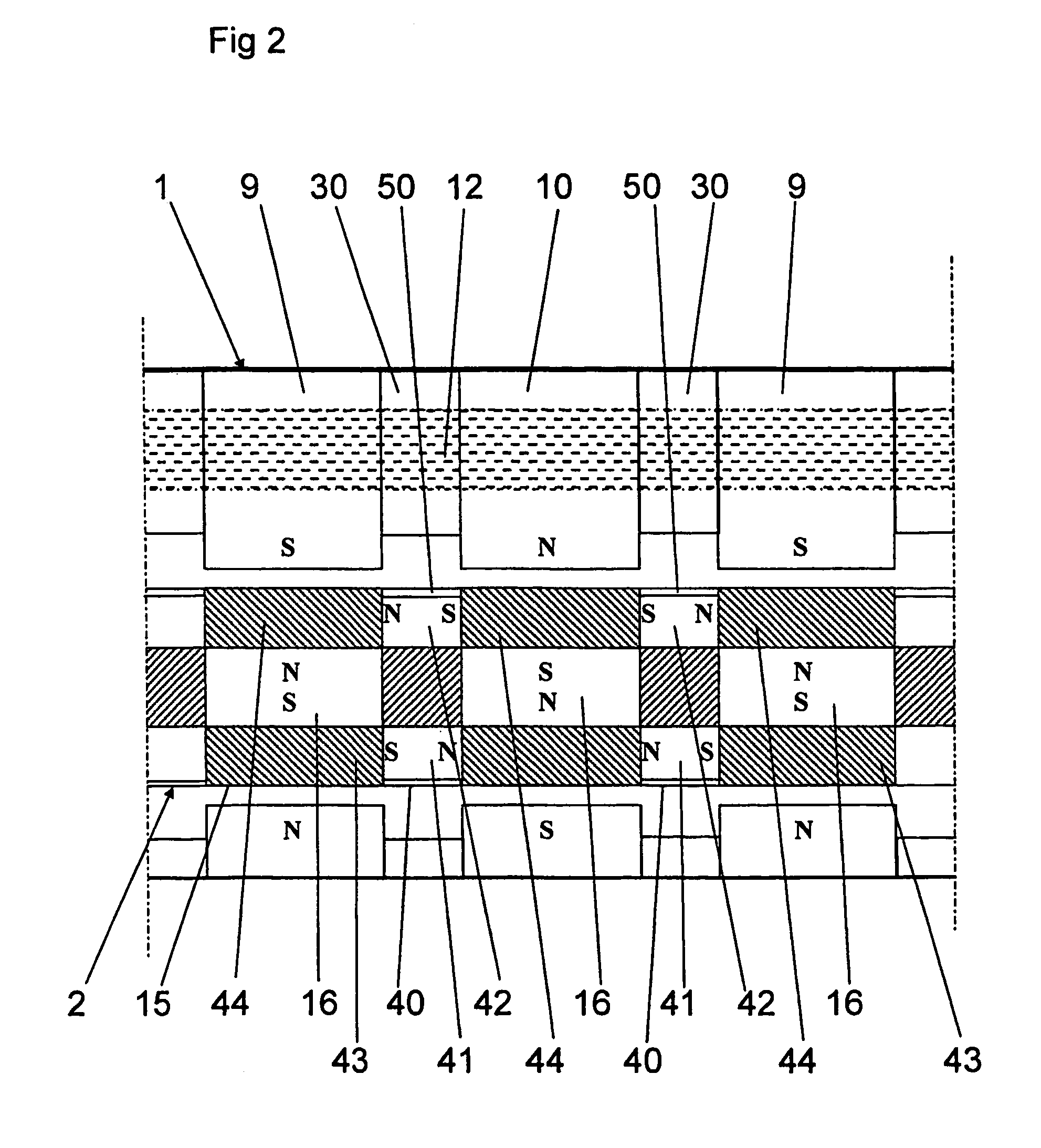Electrical machine and use thereof
a technology of electric machines and electric motors, applied in the field of electric machines, can solve the problems of low power factor of high torque density of known transversal-flux machines, weak magnetic coupling between stators and moving elements or rotors, and part of magnetic flux disappearing from imaginary magnetic flux circuits without performing any work, etc., to achieve small magnetic leakage, improve power factor, and high torque density
- Summary
- Abstract
- Description
- Claims
- Application Information
AI Technical Summary
Benefits of technology
Problems solved by technology
Method used
Image
Examples
first embodiment
[0033] The present invention relates to an electrical machine of the transversal-flux type. The electrical machine comprises a stator 1 and a movable element 2. FIG. 1 schematically shows a linear electrical machine 3 according to the invention with a movable element 2 moving in relation to the stator 1 back and forth along an essentially rectilinear movement path extending parallel to the axis a. It should be noted that in this application, the expression linear electrical machine also relates to the case where the movable element 2 moves back and forth along an arched movement path.
second embodiment
[0034]FIG. 8 schematically shows a rotating electrical machine 4 according to the invention with a movable element 2 in the form of a rotor rotating around a centre axis b, the movement path extending along a circle around the centre axis b. In this case, as in the arched case above, the term movement path, in the expressions “across the movement path” and “parallel to the movement path”, respectively, means the tangent to the movement path in the position in question.
[0035] In the following, the first embodiment will first be described with reference to FIGS. 1-7, wherein FIG. 2 only shows a schematic composition whereas FIGS. 3-7 show more of a possible design. The stator 1 comprises a plurality of stator elements 9, 10 (see FIG. 2) and an electric conductor that forms a winding 11 extending in an essentially closed winding path, which is schematically indicated in FIG. 1. The winding 11 extends through each stator element 9, 10. In the embodiment shown in FIGS. 2-7, the essential...
PUM
 Login to View More
Login to View More Abstract
Description
Claims
Application Information
 Login to View More
Login to View More - R&D
- Intellectual Property
- Life Sciences
- Materials
- Tech Scout
- Unparalleled Data Quality
- Higher Quality Content
- 60% Fewer Hallucinations
Browse by: Latest US Patents, China's latest patents, Technical Efficacy Thesaurus, Application Domain, Technology Topic, Popular Technical Reports.
© 2025 PatSnap. All rights reserved.Legal|Privacy policy|Modern Slavery Act Transparency Statement|Sitemap|About US| Contact US: help@patsnap.com



